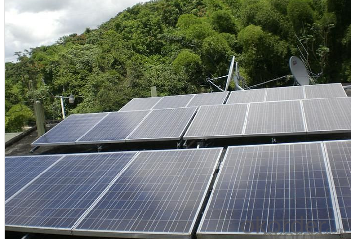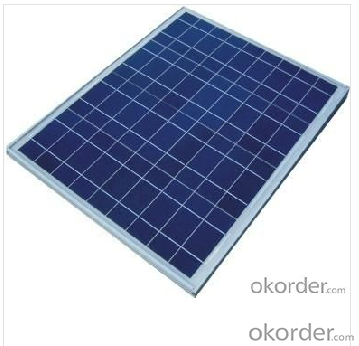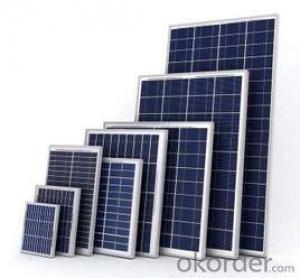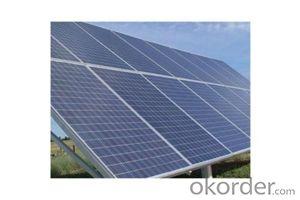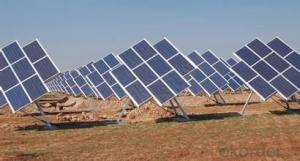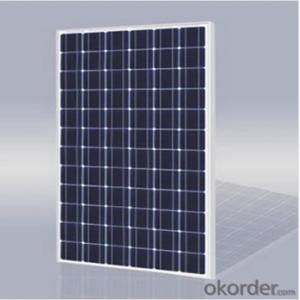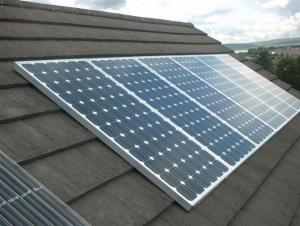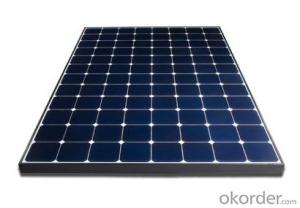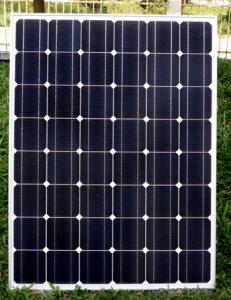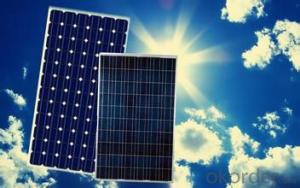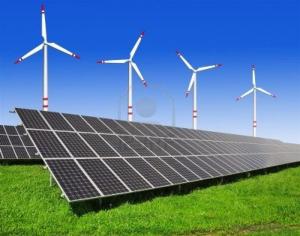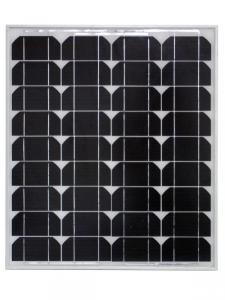45w Marine Grade CNBM Monocrystalline Silicon Solar Panel for Home Use
- Loading Port:
- Shanghai
- Payment Terms:
- TT or LC
- Min Order Qty:
- 1 pc
- Supply Capability:
- 50000000 pc/month
OKorder Service Pledge
OKorder Financial Service
You Might Also Like
45W CNBM Monocrystalline Silicon Panel for Home Using
Product Description:
Zhongjing Solar is a leading designer and manufacturer of high performance solar products for both residential and commercial use ,
including 3w to 300w . We are committed to providing the world with clean and renewable energy to ease the energy shortages and reduce the environmental effects of human activities.
Our products and manufacturing processes are fully compliant with product safety and EMS requirements, including TUV/IEC61215 and 61730, CSA/UL1703,MCS,CE and ISO9001:2008 .ISO14001:2004 and OHSAS18001
Feature
performance tolerance: 0~+3%;
product guarantee: 10 years
Junction Box: EG-TL-BOX026
Connector: Original MC4 or MC4 compatible
EGing label: 80*120mm
Cells: 156*156mm, 220um+/-20um.
Series No.: a series number will be stuck to the module underneath the glass. This barcode is the serial number of the module.
Frames: Aluminum, 1650*990*35mm. The frames of all delivered modules within this contract must be identical.
Frames – mounting holes: All modules delivered within this contract, will have the holes for mounting of the modules at the same planned intervals.
Glass: All modules delivered within this contract will have the same type of glass in functional and optical regards.
Size: 1650*990*35mm
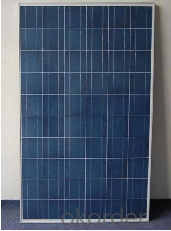
Physical characteristic
1. Rigorous quality control meets the highest international standards.
2. High-transmissivity low-iron tempered glass, strong aluminium frame.
3. Using UV-resistant silicon.
4. IS09001/14001/CE/TUV/UL
FAQ:WHAT'S THE ADVANTAGES OF CNBM?
CNBM is a state-owned company under jurisdiction of central goverment , one of Fortune 500 .Just because of this ,we can get more support and resources from our government.So ,it is realiable .
CNBM's solar products are high-qualified with TUV,UL,VDE,CE,ISO certificates. Our products ranges top in China.
Just as I mentioned in attahment ,we signed 500MW project with Urkan under the witness of our chairman Xi Jinping ,CNBM has ability to meet your large quantity needs,Our annual capacity is 1GW.
We can offer you a competitive price .Because you are our potential and valued customer .
We ,CNBM ,has our own factory :CNBM JETION SOLAR .We can also customize according to customers' need . You can google our factory .
- Q: Hi, i want to please a solar panel in Lima Peru, my Latitude is -2 and longitude -77. I understand that since i am in the southern hemisphere, my panel should be pointing north. However, i am using a program called pvdesigner, and according to this, y should face my panel with and azimuth of 00degrees (0 = south) and a tilt of 60degrees. Does this make any sense?thanks
- Typically, solar panels are installed facing the same as your latitude = 2 degrees to the North measured from horizontal. 60 degrees from vertical = 30 degrees from horzontal will give almost as much power in June as in December = beginning of Summer. You can face your panels straight up = zero tilt from vertical = better for December/ not so good in June. Usually, the same tilt as your North facing roof is best as it simplifies installation and reduces wind loading. Shade from trees etc will much reduce the power you get. Neil
- Q: How do solar panels affect wildlife?
- Solar panels can have both positive and negative effects on wildlife. On the positive side, solar panels can provide a habitat for certain species, such as birds or insects, as they can create shaded areas or serve as perches. Additionally, solar farms often have vegetation underneath or around the panels, which can attract and support a diverse range of wildlife. However, there are also potential negative impacts to consider. Large-scale solar projects can disrupt or destroy natural habitats, leading to the displacement or loss of certain species. Additionally, solar panels can pose a risk to birds and other flying animals if they are not properly designed or installed. Glare from the panels may also impact wildlife behavior or migration patterns. Overall, it is important to carefully plan and manage solar installations to minimize any negative impacts on wildlife while maximizing the benefits they can provide.
- Q: Can solar panels be installed in urban areas with limited space?
- Yes, solar panels can be installed in urban areas with limited space. There are various innovative solutions available, such as rooftop solar panels, solar canopies, and solar facades, which can be utilized to make the most of the available space in urban environments. Additionally, advancements in solar technology have made it possible to install more efficient and compact solar panels, further facilitating their installation in limited spaces.
- Q: How do solar panels affect the property's operating costs?
- Solar panels can significantly reduce a property's operating costs by generating clean and renewable electricity. By harnessing sunlight, solar panels can power various appliances and systems, reducing or even eliminating the need to rely on expensive grid electricity. This can lead to substantial savings on utility bills, making solar panels a financially sound investment for property owners.
- Q: Can solar panels be installed in a remote location?
- Yes, solar panels can be installed in a remote location. In fact, remote locations with abundant sunlight can be ideal for solar panel installations as they can generate electricity even without access to a traditional power grid. The advancements in solar technology and the ability to store excess energy in batteries make it easier to set up and maintain solar systems in remote areas.
- Q: If I wanted to add solar panels to my home to produce on average, 8 kWh of electricity daily, how much do you estimate it would cost using state of the art technology?I live in Virginia (Washington DC Metro Area), and I have Dominion Power. I pay the following electric rates:Jun-Sep $0.0904/kWhOct-May $0.0776/kWhAnnual Ave: $0.0824/kWhDistribution charges add on approximately another $0.0228/kWh.How long would the ROI for an 8 kWh/day solar system be?
- Figure 8 hours of sun per day, so 8 kW-hr is a rate of kW, which is a medium sized panel, probably not enough to operate your house totally, unless you have a very small unit. Averaged over 24 hours, that is power at a rate of only 300 watts, enough for a TV. Average US home use is .2 kW, which over 24 hours is 29 kW-hr, plus you need extra for cloudy days, peak demands, and to charge batteries. You have to decide off-grid or on-grid, and if you want to (and are allowed to) sell excess power to the power company. Off gird, the cost of batteries and charge controller are a large part of the cost. On-grid, you have to purchase equipment approved by the power company to match your power with the grid. Panels will cost about $3 per watt, so for 000 watts that is $3000. Double that for installation, then add in cost of charge controller, inverter, batteries, etc. The last items depend on your alternatives, see paragraph above. .
- Q: Can solar panels be installed on art installations or sculptures?
- Yes, solar panels can be installed on art installations or sculptures. In fact, integrating solar panels into art installations and sculptures has become a popular trend in recent years. This allows for the creation of sustainable and eco-friendly artworks that can generate renewable energy. Additionally, the combination of solar panels and art offers an innovative way to raise awareness about renewable energy and environmental issues.
- Q: Can solar panels be installed on the ground instead of a roof?
- Yes, solar panels can be installed on the ground instead of a roof. Ground-mounted solar panels are a popular option for those who do not have suitable roof space or prefer not to install them on their roofs. Ground installations offer flexibility in terms of panel orientation and can potentially generate more electricity due to optimal sun exposure.
- Q: How do solar panels affect my electricity bill?
- Solar panels can significantly reduce your electricity bill by producing clean and renewable energy from the sun. By generating your own electricity, you can offset the amount of power you need to purchase from the grid, resulting in lower monthly bills. Additionally, if your solar panels generate more electricity than you consume, you may even receive credits or payments from your utility company.
- Q: Hello everybody, the area we are living has energy crises with no electricity available most of the time. What I am thinking is to buy a solar panel with other required accessories. Please note we have normally long sunny days most of the time during a year.Please advice installing solar energy system would supply energy 24/7? I have a television, a dvd player, a fan, 4 energy saver lights (2 watt each) and a laptop. Please also advice the specifications for the system to be installed and the points I need to ensure at the time of purchase. I think of buying a solid battery (not acidic battery)The forum is open for your kind suggestions.Thanks!
- I okorder /
Send your message to us
45w Marine Grade CNBM Monocrystalline Silicon Solar Panel for Home Use
- Loading Port:
- Shanghai
- Payment Terms:
- TT or LC
- Min Order Qty:
- 1 pc
- Supply Capability:
- 50000000 pc/month
OKorder Service Pledge
OKorder Financial Service
Similar products
Hot products
Hot Searches


